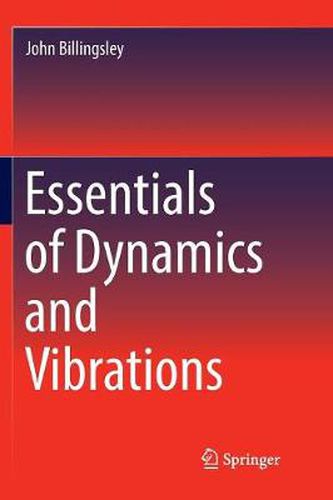Readings Newsletter
Become a Readings Member to make your shopping experience even easier.
Sign in or sign up for free!
You’re not far away from qualifying for FREE standard shipping within Australia
You’ve qualified for FREE standard shipping within Australia
The cart is loading…






This title is printed to order. This book may have been self-published. If so, we cannot guarantee the quality of the content. In the main most books will have gone through the editing process however some may not. We therefore suggest that you be aware of this before ordering this book. If in doubt check either the author or publisher’s details as we are unable to accept any returns unless they are faulty. Please contact us if you have any questions.
Dynamic objects move in mysterious ways. Their analysis is a difficult subject involving matrices, differential equations and the complex algebra of oscillatory systems. However, in this textbook, the author draws on his long experience of designing autopilots, robots for nuclear inspection and agricultural machine guidance to present the essentials with a light touch. The emphasis is on a deep understanding of the fundamentals rather than rote-learning of techniques. The inertia tensor is presented as a key to understanding motion ranging from boomerangs to gyroscopes. Chains of transformations unravel the motion of a robot arm.
To help the reader visualise motion, ranging from unbalanced rotors to vibrating systems with multiple modes and damping, there are abundant simulation examples on a linked website. These will run in any web browser, while their simple code is on open view for modification and experimentation. They show that nonlinear systems present no problems, so that friction damping can be modelled with ease.
A particular problem for mechanical engineers is that the vibration topics encroach on the territory of the electrical engineer. State variables open up control theory while the solution of differential equations with sinusoidal inputs is simplified by an understanding of sine-waves as complex exponentials. The linked web site has several areas of mathematics revision to help.
A final chapter pokes fun at the misrepresentation of dynamics in cinema productions.
$9.00 standard shipping within Australia
FREE standard shipping within Australia for orders over $100.00
Express & International shipping calculated at checkout
This title is printed to order. This book may have been self-published. If so, we cannot guarantee the quality of the content. In the main most books will have gone through the editing process however some may not. We therefore suggest that you be aware of this before ordering this book. If in doubt check either the author or publisher’s details as we are unable to accept any returns unless they are faulty. Please contact us if you have any questions.
Dynamic objects move in mysterious ways. Their analysis is a difficult subject involving matrices, differential equations and the complex algebra of oscillatory systems. However, in this textbook, the author draws on his long experience of designing autopilots, robots for nuclear inspection and agricultural machine guidance to present the essentials with a light touch. The emphasis is on a deep understanding of the fundamentals rather than rote-learning of techniques. The inertia tensor is presented as a key to understanding motion ranging from boomerangs to gyroscopes. Chains of transformations unravel the motion of a robot arm.
To help the reader visualise motion, ranging from unbalanced rotors to vibrating systems with multiple modes and damping, there are abundant simulation examples on a linked website. These will run in any web browser, while their simple code is on open view for modification and experimentation. They show that nonlinear systems present no problems, so that friction damping can be modelled with ease.
A particular problem for mechanical engineers is that the vibration topics encroach on the territory of the electrical engineer. State variables open up control theory while the solution of differential equations with sinusoidal inputs is simplified by an understanding of sine-waves as complex exponentials. The linked web site has several areas of mathematics revision to help.
A final chapter pokes fun at the misrepresentation of dynamics in cinema productions.